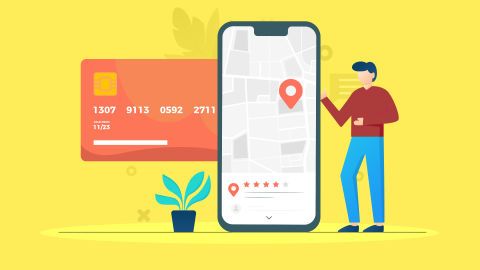If you are planning to upgrade your phone to enjoy these new technologies, the Bajaj Finserv Insta EMI Card can help make your purchase more affordable. With easy monthly payments and instant approval, buying a new 4G or 5G phone is now within reach for everyone.
Introduction to 4G and 5G
Mobile networks have changed how we connect with the world. Each new generation brings faster speeds and better features. 4G made mobile internet truly useful with speeds good enough for videos and apps. Now, 5G is taking things to a whole new level with super-fast data and the ability to connect more devices at once.
What is 4G?
4G is the fourth generation of mobile networks that came out around 2010. It uses LTE (Long-Term Evolution) technology to give us much faster internet than older 3G networks. With 4G, you can download at speeds between 20 to 100 Mbps, which is good enough for watching HD videos, making video calls, and using most apps without problems.
Most parts of India now have 4G coverage, especially in cities and towns. It has become the standard network that most people use every day on their phones.
What is 5G?
5G is the fifth generation of mobile networks that started appearing in India recently. It uses new technologies like mmWave spectrum and Massive MIMO antennas to deliver speeds up to 10 Gbps in perfect conditions. This makes it up to 100 times faster than 4G!
Besides speed, 5G has very low delay times (under 5 milliseconds) and can handle many more connected devices at once. This makes it perfect for new technologies like smart cities, self-driving cars, and virtual reality.
Key differences between 4G and 5G
The difference between 4G and 5G goes beyond just speed. Here are the main ways they differ:
| Feature | 4G | 5G |
| Speed | Usually between 20 Mbps and 100 Mbps for downloads. This means you can download a movie in about 5-10 minutes. | Between 1 Gbps and 10 Gbps in ideal conditions. The same movie would download in just seconds on 5G. |
| Latency | Between 20 to 40 milliseconds. This small delay is why you might notice a slight lag during video calls. | Less than 5 milliseconds. This near-instant response enables real-time applications like remote medical procedures and gaming without any noticeable delay. |
| Network capacity | Supports fewer devices per cell tower. In crowded areas, 4G networks can become slow as they reach their limits. | Can handle many more devices at once. This means better performance even in crowded places like stadiums or busy shopping areas. |
| Coverage | Available across most of India, including many rural areas. It has had years to expand and cover most populated regions. | Mainly in big cities with gradual expansion planned. Rural areas may have to wait longer for 5G coverage due to the cost of new equipment. |
| Energy efficiency | Uses more power for data transmission. This affects both network equipment and your phone battery. | Designed to use less power per unit of data. However, because 5G processes more data, overall battery usage may still be higher. |
| Applications | Good for everyday uses like web browsing, social media, and streaming videos. Most current apps and services were designed with 4G speeds in mind. | Enables new technologies like Internet of Things (IoT), augmented reality, smart cities, and industrial automation. These advanced applications need the speed and low latency that only 5G can provide. |
Speed comparison
- 4G speeds: Usually between 20 Mbps and 100 Mbps for downloads. This means you can download a movie in about 5-10 minutes.
- 5G speeds: Between 1 Gbps and 10 Gbps in ideal conditions. The same movie would download in just seconds on 5G.
- 4G latency: Between 20 to 40 milliseconds. This small delay is why you might notice a slight lag during video calls.
- 5G latency: Less than 5 milliseconds. This near-instant response enables real-time applications like remote medical procedures and gaming without any noticeable delay.
- 4G capacity: Supports fewer devices per cell tower. In crowded areas, 4G networks can become slow as they reach their limits.
- 5G capacity: Can handle many more devices at once. This means better performance even in crowded places like stadiums or busy shopping areas.
- 4G coverage: Available across most of India, including many rural areas. It has had years to expand and cover most populated regions.
- 5G coverage: Mainly in big cities with gradual expansion planned. Rural areas may have to wait longer for 5G coverage due to the cost of new equipment.
- 4G efficiency: Uses more power for data transmission. This affects both network equipment and your phone battery.
- 5G efficiency: Designed to use less power per unit of data. However, because 5G processes more data, overall battery usage may still be higher.
- 4G applications: Good for everyday uses like web browsing, social media, and streaming videos. Most current apps and services were designed with 4G speeds in mind.
- 5G applications: Enables new technologies like Internet of Things (IoT), augmented reality, smart cities, and industrial automation. These advanced applications need the speed and low latency that only 5G can provide.
| Network | Pros | Cons |
| 4G | Widely available across India, even in smaller towns. You can stay connected in most places you travel within the country. Works with most existing phones. You do not need to buy a new device to use 4G. More affordable data plans. 4G plans typically cost less than 5G plans. | Limited speed compared to 5G. Downloads and uploads take longer, especially for large files. Higher latency affects gaming and video calls. You may notice delays during real-time activities. Gets congested in crowded areas. Network speed drops when many people use 4G in the same location. |
| 5G | Ultra-fast speeds transform how we use the internet. Tasks that took minutes now take seconds. Very low latency for real-time applications. Perfect for gaming, video calls, and new technologies. Can connect many more devices at once. Ideal for smart homes with multiple connected gadgets. | Limited availability, mostly in major Indian cities. Many areas are still waiting for 5G coverage. Requires a 5G-compatible phone. Older devices cannot connect to 5G networks. May drain battery faster. The higher data processing can use more power. |
Pros and cons of 4G
Pros:
- Widely available across India, even in smaller towns: You can stay connected in most places you travel within the country.
- Works with most existing phones: You do not need to buy a new device to use 4G.
- More affordable data plans: 4G plans typically cost less than 5G plans.
- Limited speed compared to 5G: Downloads and uploads take longer, especially for large files.
- Higher latency affects gaming and video calls: You may notice delays during real-time activities.
- Gets congested in crowded areas: Network speed drops when many people use 4G in the same location.
Pros:
- Ultra-fast speeds transform how we use the internet: Tasks that took minutes now take seconds.
- Very low latency for real-time applications: Perfect for gaming, video calls, and new technologies.
- Can connect many more devices at once: Ideal for smart homes with multiple connected gadgets.
- Limited availability, mostly in major Indian cities: Many areas are still waiting for 5G coverage.
- Requires a 5G-compatible phone: Older devices cannot connect to 5G networks.
- May drain battery faster: The higher data processing can use more power.
Choosing between 4G and 5G depends on your needs, location, and budget. If you live in a rural area or small town, 4G remains the practical choice as 5G coverage is still limited. 5G makes sense if you live in a major city, need the fastest possible speeds, or use data-heavy applications.
Bajaj Finserv Insta EMI Card makes upgrading to a new phone more affordable. You may already be eligible —Enter your mobile number and OTP to check your pre-approved offer.
4G and 5G mobile online with Insta EMI Card
The Bajaj Finserv Insta EMI Card makes buying a new 4G or 5G phone easy and affordable by converting the full price into easy EMIs. Here is how to use it:
- Visit any major e-commerce website like Amazon, Flipkart, or the official store of phone brands
- Select the 4G or 5G smartphone you want to buy
- Proceed to checkout and choose EMI as your payment option
- Select Bajaj Finserv from the available EMI options
- Enter your Insta EMI Card details and choose a repayment tenure (from 1 to 60 months)
- Complete the purchase with OTP verification
- Visit any Bajaj Finserv partner store like Croma, Vijay Sales, or brand outlets
- Choose the 4G or 5G smartphone you want to buy
- Tell the sales representative you want to use your Bajaj Finserv Insta EMI Card
- Share your card details with the store representative
- Select your preferred EMI tenure
Eligibility criteria and documents required for Bajaj Finserv Insta EMI Card
To get an Insta EMI Card, you need to:
- Be an Indian citizen between 21 and 65 years of age This age range covers most working adults.
- Have a regular source of income This helps ensure you can make the monthly payments.
- Maintain a good credit score per Bajaj Finserv policies A higher credit score improves your chances of approval.
- PAN card and Aadhaar card
- Address proof
- Bank account information with IFSC code for e-mandate registration
The difference between 4G and 5G is clear – 5G offers faster speeds, lower latency, and supports more devices, while 4G provides reliable, widespread coverage. Your choice should match your needs, location, and budget.
Whether you decide on a 4G or 5G device, the Bajaj Finserv Insta EMI Card can make your purchase more affordable with easy monthly instalments spread over up to 60 months. Check your pre-approved offer today – you may already be eligible for a card loan offer amount of up to Rs. 3 lakh. Enter your mobile number and complete OTP verification to find out instantly.
Stay connected with the right technology that fits your lifestyle and budget!
Biggest upcoming sale in India in 2025
Top platforms to buy products with Bajaj Insta EMI Card
Check more




